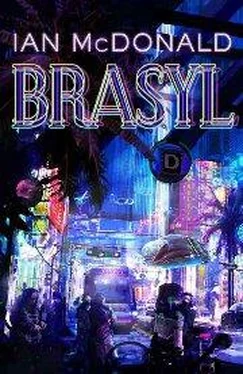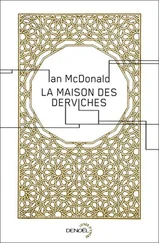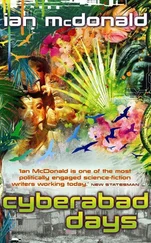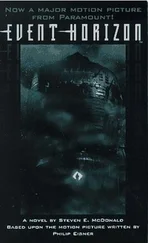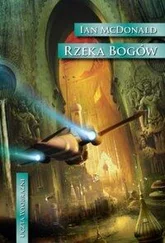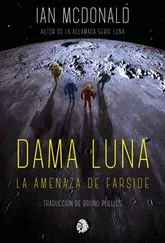Jogo: “Game” or match of capoeira. Unlike other martial arts, one “plays” capoeira, emphasizing its street-smart, malandro aesthetic.
Kibe: Delicious deep-fried meatballs of Lebanese extraction, often found at breakfast.
Ladeira: Steep “ladder” like alley in a favela. Usually traversable only on foot or by moto-taxi.
Lanchonete: Lunch-stand/small cafe.
Lavrador de cana: Small-scale colonial cane-grower, owning at the most half a dozen slaves.
Lingua geral: “General language”; a simplified version of the languages of the Tupi peoples used as a universal tongue. In eighteenth-century Brazil it was more widely spoken than Portuguese.
Loira: White with blond hair.
Maconha: Marijuana.
Mae do santo: Candomble priestess.
Malandragem: The entire capoeira philosophy of malicia and jeito (qv) as a theory of life.
Malicia: Capoeira term meaning “street cunning/warrior smarts” — the abillity to see and rake an unfair advantage if one is presented.
Maloca: Multigeneration Indian house.
Mameluco: Alternative expression for caboclo, usually in military service.
Moqueça: Bahian (usually seafood) dish based around coconut milk and dende.
Morbicha: Headman of a village.
Morena-fechada: Very dark, almost mulatta.
Morro: Steep hill characteristic of Rio.
Mulatinho: Lighter-skinned white-negro.
Orixá: A god, force of nature, divine ancestor, archetype — all of these and subtly much more; the expression of the divine in Bahian candomble.
Pae do santo: Candomble priest.
Pão de queijo: Cheese-bread. A Brazilian obsession.
Paulista: Inhabitant of São Paulo (state).
Paulistano/a: Inhabitant of São Paulo (city).
Patúa: Amulet worn to ward against evil spirits in capoeira.
PCC: Main Paulistano criminal gang. In Rio the favelas are divided between the ADA (Amigos dos Amigos) and the CV-Commando Verrmelho, or Red Command.
Peças: Literally “pieces”; old colonial term for slaves.
Pelourinho: Slave whipping post, also that area of Salvador in which it was set up.
Pernambucano: From the state of Pernambuco in northeastern Brazil.
Pichação: Tag graffiti; in Brazil usually done with a paint roller.
Pistoleiro: Hired gunman.
Preto: Black-as in color or person. Racial terms are used more freely and with less political freight in Brazil than in the north.
Puta: Whore, most commonly used in the popular sense of “bitch.”
Reconçavo: The early-settled area around the Bahia de Todos os Santos, the heart of colonial Brazil.
Reducione/reduction: A group of native villages or aldeias grouped imo a working collective under Jesuit authority.
Reveillon: Mass beach ceremony in Rio at New Year when flowers are offered to Yemanja. Possibly even more popular than carnaval, certanly less commercialized.
Roda: The circle within which capoeira takes place.
Rodovia: Expressway.
Rodoviaria: Bus station.
Sampa: Paulistano name for their city.
Seleção: The Brazil international soccer team.
Serrao: The semiarid region in northeastern Brazil.
Soldado: Soldier — in the gangster sense.
Taipa: Brazilian mud adobe.
Tanga: Originally a triangle of fabric to cover the genitals of either sex, now a bikini style.
Telenovela: Insanely poplar, insanely badly made, and insanely trashy übersoap; the mainstay of Brazilian television.
Terra firme: High forest almost never flooded.
Terreiro: “Church” or temple of candomble and urn banda-usually a converted urban or suburban house within a sacred enclosure.
Travesti: Transvestite.
Uakti: Legendary Amazonian forest monster.
Umbanda: Rio/São Paulo remix of Bahian candomble, usually practiced by whites.
Vaqueiro: Cattle rancher.
Varzea: Flood-plain zone of a river, regularly flooded.
Yemanja: Yoruban deity; “Mother whose children are like fishes,” absorbed into candomble as a sea-goddess, who is venerated in a (recent) Mass celebration on the beaches of Rio at New Year.
Daniela Prodohl, Paulo Prodohl, and Cleusa Nascimento for help with the Portuguese and rowdy arguments over doces on fine points of idiom. Any egregious errors are entirely my own.
Zack Appleton for assistance with biofuels.
Heidi Hopeametsa and Syksy Rasanen for lunch, capoeira, and physics.
The intellectual godfather of this book is David Deursch’s The Fabric of Reality . A few years old, but one of the most intellectually thrilling books I have read.
Books in English about Brazil are surprisingly hard to find: there are ten times as many about Cuba, a country you could lose in the Itaipu Dam, as there are abour Brazil. Nevertheless, here are a few volumes I found special.
John Hemming: Red Gold . Peerless, beautiful, and grim, this is the definitive history of the Brazilian Indians.
David G. Campbell: A Land of Ghosts . A beautifully written, humane account of the ecology and peoples of western Amazonia.
Robert M. Levine and John J. Crocitti: The Brazil Reader . Invaluable for the 134 types of skin color alone.
Euclides da Cunha: Rebellion in the Backlands (Os Sertões) . Classic, stunning story of the nineteenth-century Canudos uprising and its brutal suppression.
Alex Bellos: Futebol . The Guardian ’s Brazil correspondent has produced the best book about the beautiful game in Brazil and the essential guide about how to be Brazilian. I freely admit sampling his definitive account of the Fateful Final. Not a dull page in it.
Peter Robb: A Death in Brazil . Fascinating journalistic study of political corruption in the northeast, but also a history, a travel book, and a cookbook as well.
THE PLAYLIST FOR BRASYL CONTAINS
Siri: “No Tranco”
Suba: “Tantos Desejos” (Nicola Come remix)
Samba de Coco Raizes de Arcoverde: “Gode Pavao”
Acid X: “Uma Geral”
Bebel Gilberto: “Tanto Tempo”
Suba: “Na Neblina”
Fala: “Propozuda R’n’Roll”
Salome de Bahia: “Taj Mahal” (Club Mix)
Céu (feat. Pyroman): “Malemôlencia”
Milton Nascimento: “Travessia”
Carlinhos Brown/Mestre Pintodo do
Bongo: “Ai”
Bebel Gilberto: “Sem Contenção” (Truby Trio remix)
Mylene: “Nela Lagoa”
Tijuana: Pula
Carlinhos Brown: “Água Mineral”
Pagode Jazz: “Sardinha’s Club”
Suba: “Você Gosca”
Bonde Das Bad Girls: “Montagem Skollboll”
Suba: “Abraço”
Milton Nascimento: “Cio da terra”
I A NM c D O N A L D is the author of many science fiction novels, including Desolation Road ; King of Morning , Queen of Day ; Out on Blue Six ; Chaga ; Kirinya ; and River of Gods. He has won the Philip K. Dick Award, the Theodore Sturgeon Award, and the BSFA Award, been nominated for a Nebula Award and a World Fantasy Award, and has several nominations for both the Hugo Award and the Arthur C. Clarke Award. The Washington Post called him “one of the best SF novelists of our time.” He lives in Belfast, Northern Ireland.
